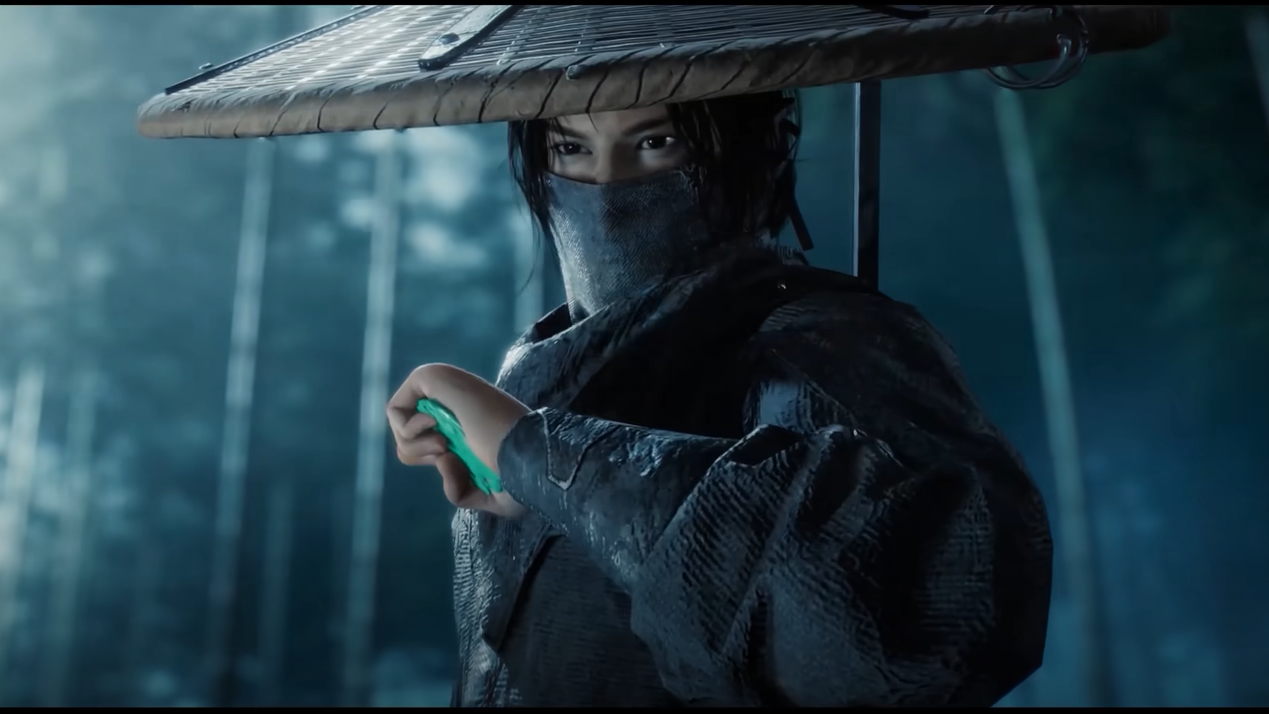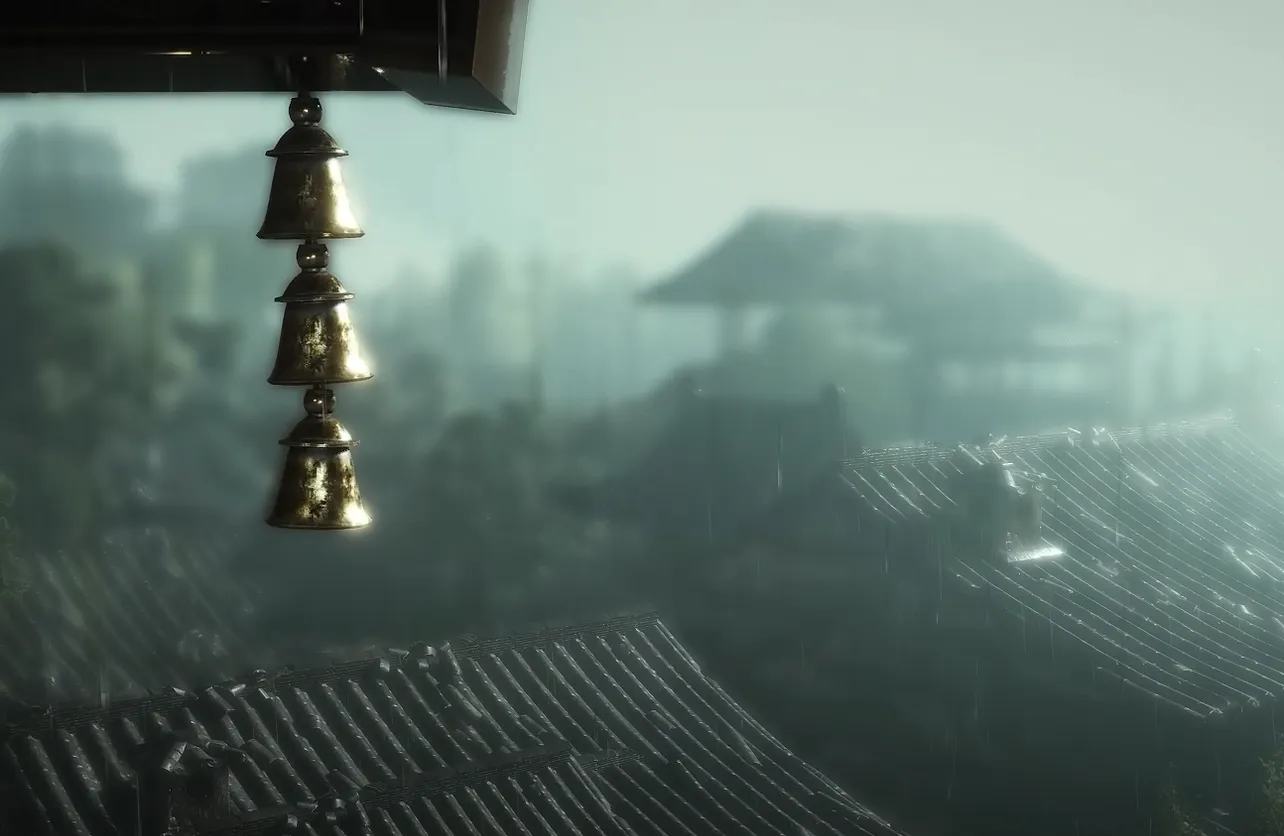Ruby is one of the first faces you get used to in Where Winds Meet: loud, clingy, forever bragging about becoming a heroine of the jianghu. She’s also the game’s first real gut punch. The question players keep circling is simple: is she actually gone, or is there room for a twist later?
Ruby’s status: Is she dead in Where Winds Meet?
Within the story as it currently exists, Ruby dies during the climax of Chapter 1, “Heaven Has No Pier”. There is no way to prevent this, and there is no resurrection or late-game return.
The game treats her death as canon: cutscenes, side encounters, and NPC dialogue all frame Ruby as someone who sacrificed herself during the attack on Heaven’s Pier and did not survive.
How Ruby dies in Heaven Has No Pier
Ruby’s last moments are tied directly to the assault on Heaven’s Pier by the Aureate Pavilion and the witch that leads their forces. The village is engulfed in chaos: buildings burn, villagers scatter, and you end up fighting alongside Yi Dao (Killerblade) and Du Qiaoxian around Sweetwine Tower while trying to break the witch’s illusion and stop the attack.
| Stage | Event | What Ruby does |
|---|---|---|
| Early attack | Aureate Pavilion soldiers and the witch hit Heaven’s Pier with fire and illusions. | Stays close to you and the villagers, framed as your kid sister figure. |
| Retreat to Sweetwine Tower | Villagers gather while you and allies fight to hold the line. | Begins arguing that she should slip out and help everyone escape. |
| Ruby’s plan | The group needs a distraction to open a path out of the burning valley. | Insists she can sneak to the far side of Moonveil Mountain, wave a signal, and hide behind a large rock. |
| Your response | Dialogue and cutscene show your character refusing to risk her. | Her hands are tied and she’s sent back with the other villagers for protection. |
| The red cape | From the far side of the mountain, a red cloak suddenly appears, fluttering high as a signal. | It’s the same cape you gave Ruby earlier, revealing she escaped and went anyway. |
| Arrow volleys | Aureate Pavilion archers fire repeatedly at the signal on the ridgeline. | Ruby’s horse, “Clip-Clop”, briefly shields her from one wave of arrows; a later volley hits her. |
| Outcome | The distraction works; you and Yi Dao push through to confront the witch and end the illusion. | Ruby falls at the signal point, having cleared the way for everyone else to survive. |
The visual language is blunt. The camera lingers on her red cape as a target. The witch orders her soldiers to shoot it. The final arrow reaches Ruby; there is no rescue scene, no follow-up where she’s found alive off-screen.
That’s why players who pushed through the chapter quickly see Ruby’s death as unambiguous: she volunteers for a distraction, you stop her, she goes anyway, and she dies making sure Heaven’s Pier has a way out.

Why Ruby isn’t in the Heaven Dream (and why people still hope)
Later in Chapter 1, the Heaven Dream sequence gives you a stylized, surreal space where important people and memories surface. Many players noticed that Ruby is mostly absent there, and that gap has become the main fuel for fan theories that she might have survived somehow or is being saved for a time skip.
In practice, the game quietly undercuts that hope. Some players point out a brief glimpse of Ruby in the Heaven Dream’s final cutscene, which feels more like a confirmation of loss than a tease. Others interpret her limited presence as a character beat for the protagonist: the idea that they literally cannot process seeing Ruby again, even in a dream, because her death is still too raw.
Nothing in the main plot, later cities, or current side content reveals a living Ruby in the jianghu years later. The most the game offers is thematic and emotional closure, not a twist.
Post‑death encounters: Ruby’s legacy in Qinghe and Moonveil Mountain
Ruby doesn’t reappear in the flesh, but the world keeps circling back to her. Several encounters and references are built around the idea that she became a local legend.
| Location / quest | What it adds about Ruby | How it frames her fate |
|---|---|---|
| Qinghe storyteller | A storyteller recounts the attack on Heaven’s Pier, describing how the Young Master and Ruby saved the villagers. | He vows to write a book titled “The Tale of Ruby” to ensure her bravery is remembered. |
| Qinghe side content (map-related quest) | A quiet quest linked to Ruby’s curiosity and planning before the attack, often cited by players as a touching follow-up. | Reinforces that she was preparing, thinking about escape routes and adventures, not secretly surviving the battle. |
| “Her Legacy” encounter | An encounter named explicitly around her legacy, drawing on notes and clues Ruby left behind before Heaven’s Pier fell. | The tone and naming strongly suggest commemoration rather than a setup for a hidden survival arc. |
| For Whom Does He Return (Braid encounter) | Ruby is shown comforting Braid, offering to distract attackers so he can run for the river and escape. | Again positions Ruby as someone who repeatedly puts herself in harm’s way to save others. |
These follow-ups matter because they show how the region processes what happened. Ruby becomes the sort of folk hero she wanted to be, not by living long enough to grow into a famed martial artist, but by dying early and decisively to protect people she sees as family.
Why the game makes Ruby’s death unavoidable
Where Winds Meet leans into classic wuxia beats: loyalty, betrayal, and loss as engines for growth. Ruby’s death checks several boxes at once.
- It establishes real stakes early. The world is not a theme park where plot armor protects every child NPC.
- It hardens the protagonist. The “Young Master” loses someone who felt like a kid sister, which helps justify later intensity and obsession with protecting others.
- It recontextualizes Ruby’s “annoying” traits. Her chatterbox energy and impulsiveness read very differently once you’ve watched her ride out with a red cape, knowing exactly what it might cost.
Because this moment is so tightly woven into the Heaven Has No Pier structure, there is no branch where you can keep Ruby alive. Exploration can delay the inevitable—if you wander around Moonveil Mountain and Qinghe doing side content, you simply spend more time with her before the main story locks back in—but the core sequence does not change.

How the community reads Ruby now
Players are sharply split on Ruby during the early hours. Some find her dialogue exhausting, especially in certain language dubs; others see a believable child who latches onto the protagonist the way kids latch onto any older teen who treats them kindly.
Once Chapter 1 ends, those opinions soften. The same traits that irritated some players—her pushiness, her fantasies about heroism—become the foundation of a memorable sacrifice. You can see that shift in how people talk about her: jokes about her being “whiny” often sit right next to comments about regret, like wishing they had bought her that pine nut candy or taken more pictures while she was still around.
Assist mechanics and photo tools let you still bring Ruby into your party as a kind of ghost presence, which only underlines how final her story is in the main timeline: she’s mechanically available, but narratively gone.
Ruby’s arc is short, loud, and brutal, and that’s the point. Where Winds Meet uses her as more than a tutorial companion; she becomes the game’s first proof that its world expects you to live with loss. Whether you loved her or couldn’t wait to get a moment of silence, the story doesn’t really give you a choice: you leave Heaven’s Pier with a victory, a body count, and a kid’s red cape burned into memory.


